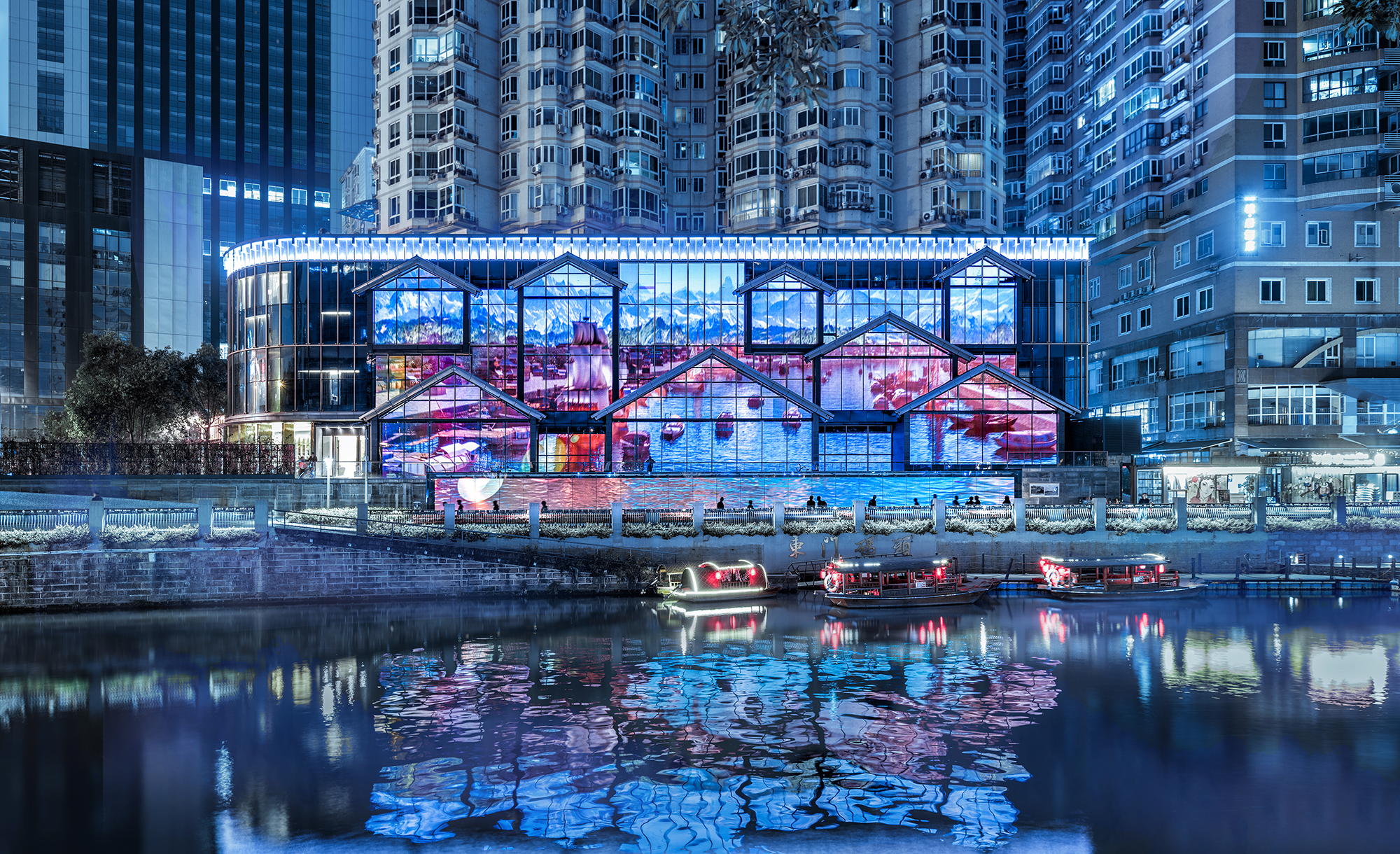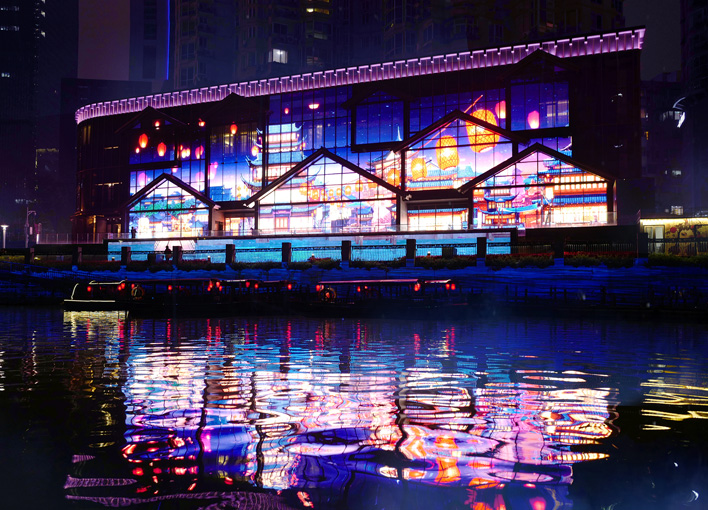Chengdu Dongmen Wharf, developed in the Tang and Song dynasties of China, was one of the five major wharves in Chengdu at that time. In the Qing Dynasty and the Republic of China, it developed into "the most prosperous and important" commercial area in the city. However, in the last round of old city reconstruction, this historical area was completely demolished and rebuilt. Today, Dongmen Wharf only has the vague words "Dongmen Wharf" to identify its location. In terms of design, from the perspective of urban design, it activates the functional requirements of the wharf and creates a fresh, interactive and experiential urban public space. In terms of space strategy, the rudiment of the existing dock culture space is formed through the recycling and reuse of the surrounding residential building podium (original commercial space) on the vaguely visible dock relics. At the same time, the integration of the original wharf and the surrounding resources of the wharf, the combination of the main building transformation, the reuse of the original wharf site and the river cruise project, to create a sustainable, integrated, immersive situational wharf space, and with the modern urban business circle, life circle in line with the urban cultural experience of public space.
In terms of architectural design, based on the prototype of the former Dongmen Wharf and its surrounding buildings, the main building is implanted with regional architectural elements to re-plan the format of the main building of the wharf. At the same time, the wharf scene of the waterfront market is realized through the double skin of the building and the surrounding landscape design (water curtain screen, etc.). In terms of structural materials, light steel structure and glass curtain wall have become the main modeling materials for the construction reconstruction of the project. The overall design and integrated construction of LED transparent screen, water curtain screen, projection equipment, glorious lighting and so on are used to reproduce the scene of Millennium Wharf, which makes the whole building have a sense of immersion at night different from that in the daytime, and to a great extent reproduces the prosperous scene of Dongmen Wharf in that year, it also creates an urban public space that attracts citizens and tourists to participate in the experience.
China
Award : WINNER
Client : Jinjiang District Government Chengdu
Affiliation : VERGE Creative Design
Designer : Yingjie Lin, Yuanyuan Zhang
https://asiadesignprize.com/exhibition/159969




New user?Create an account
Log In Reset your password.
Account existed?Log In
Read and agree to the User Agreement Terms of Use.

Please enter your email to reset your password
nice
beautiful